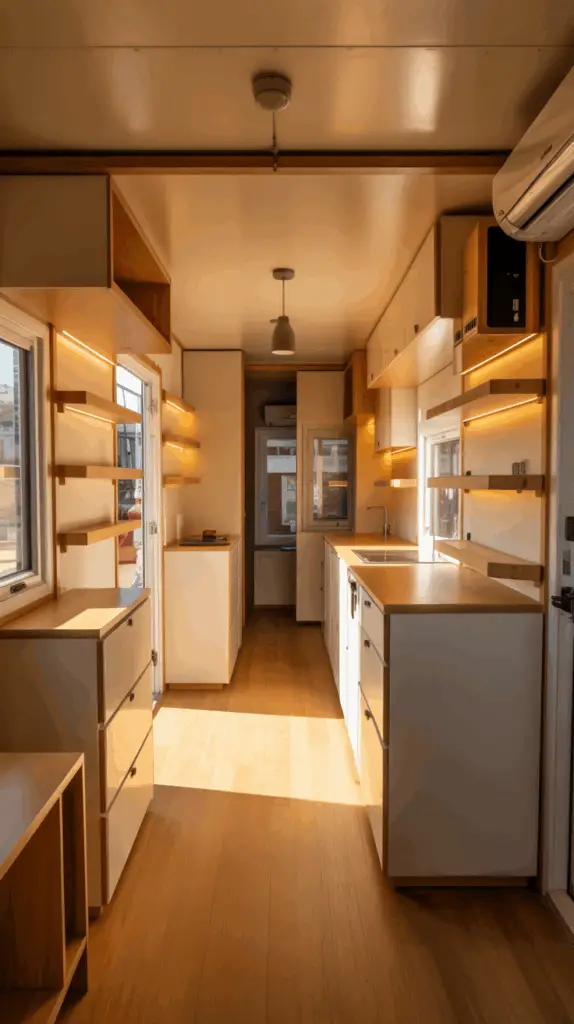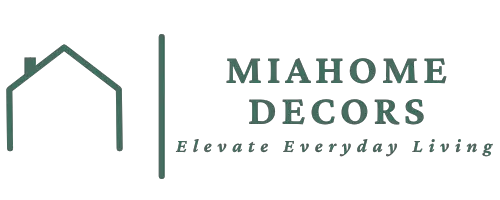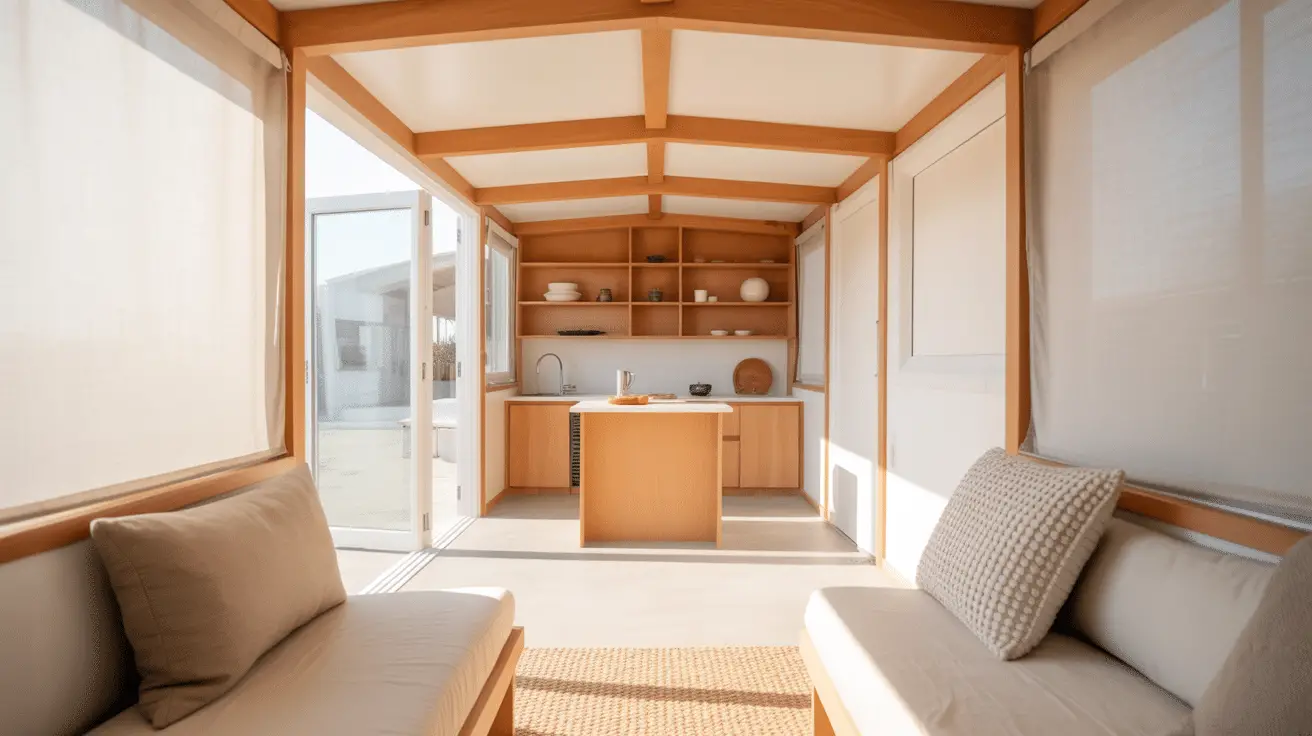Minimalist Modern Tiny House Decor Ideas for Compact Living Spaces
Table of Contents
Introduction
Imagine waking up in a sunlit, perfectly organized space where every corner feels intentional and beautiful—no clutter, no chaos, just harmony. In today’s fast-paced, consumption-driven world, tiny house living has become more than a trend—it’s a lifestyle rooted in simplicity, sustainability, and conscious design. But the challenge arises when you want your compact home to feel both minimal and modern without sacrificing comfort or personality.
Minimalist modern tiny house decor merges functionality with aesthetics, proving that small spaces can indeed be luxurious. It’s about making deliberate choices—choosing fewer, better pieces that serve multiple purposes while maintaining visual serenity. Whether you live in a 200-square-foot cabin or a compact city studio, the principles of minimalist decor can transform your home into a sanctuary of calm efficiency.
In this guide, we’ll explore practical strategies for designing and decorating a modern minimalist tiny house. You’ll learn how to maximize your space, choose colors that enhance openness, select furniture that multitasks, and incorporate decor that feels intentional and cohesive. By the end, you’ll know exactly how to achieve a space that’s as beautiful as it is functional—a home that breathes with purpose.
The Essence of Minimalist Modern Design in Tiny Homes
Minimalist modern design isn’t about living without—it’s about living with purpose. In tiny homes, every object must earn its place, blending beauty and utility. The foundation lies in simplicity: clean lines, neutral colors, and open layouts that invite calmness.
Minimalism in tiny house decor centers on intentional design choices. Instead of filling your home with decorations, you focus on a select few that bring balance and peace. The modern aspect introduces sleek materials like stainless steel, glass, and natural wood that elevate the minimalist aesthetic. Together, they create an environment that’s timeless, airy, and effortlessly stylish.
Visual Breakdown:
| Element | Minimalist Modern Approach |
| Color Palette | Neutrals, whites, beiges, soft grays |
| Materials | Wood, stone, glass, steel |
| Lighting | Natural light, recessed fixtures |
| Decor | Functional, geometric, sparse |
By reducing excess and highlighting clean forms, your space feels larger and more intentional. The goal isn’t to strip life away from your decor—it’s to give each piece room to breathe.
Maximizing Space Through Smart Layouts
When working with limited square footage, smart design is everything. Space optimization begins with careful layout planning that embraces open concepts, flexible furnishings, and storage integration.
Tiny houses thrive on adaptability. A sofa might double as a bed, or a kitchen counter may fold down into a desk. By incorporating modular furniture and built-in storage, every inch works harder without overwhelming the eye.
Practical layout design also prioritizes circulation. Clear pathways, unobstructed windows, and multi-use zones make a small area feel spacious. The minimalist approach encourages you to remove unnecessary barriers—think open shelving instead of bulky cabinets or sliding doors instead of swinging ones.
Space Optimization Table:
| Feature | Purpose | Example |
| Foldable furniture | Saves space when not in use | Murphy bed or collapsible table |
| Built-in storage | Reduces clutter | Under-stair drawers or hidden cabinets |
| Open floor plan | Increases visual flow | Combined kitchen-living area |
| Vertical storage | Utilizes height | Floating shelves or wall hooks |
When your layout is thoughtfully designed, even a 200-square-foot home can feel open, organized, and inviting.

Choosing a Minimalist Color Palette for Tiny Spaces
Color plays a vital role in shaping perception. In minimalist modern tiny house decor, the right palette can visually expand your space and set the mood for tranquility.
Start with a foundation of soft neutrals—white, beige, taupe, or gray. These hues reflect natural light and make your home feel airy. Introduce subtle contrast through darker accents like charcoal, sage, or matte black to create visual interest without clutter.
A minimalist color palette doesn’t mean boring. Layer different textures—linen, matte ceramics, brushed metals—to bring depth and warmth. Natural tones, like light oak or terracotta, connect your home to the outdoors, enhancing the feeling of openness.
Color Coordination Chart:
| Area | Base Color | Accent | Texture |
| Walls | Warm white | Soft gray | Smooth matte finish |
| Flooring | Light oak | None | Natural grain |
| Furniture | Beige or gray | Black metal | Linen, cotton |
| Decor | Neutral ceramics | Muted green | Textured fabrics |
The minimalist modern palette creates harmony between simplicity and comfort. It’s not just about color—it’s about the feeling those colors evoke: serenity, balance, and cohesion.
Furniture That Multitasks: Function Meets Form
In compact living, furniture should do more than look good—it should work double (or triple) duty. Minimalist modern decor emphasizes furniture that saves space while adding to the home’s sleek aesthetic.
Think of a bench that conceals storage beneath the seat or a dining table that folds into the wall. Built-in furniture, like window seats with drawers or staircases with hidden compartments, blends functionality with style. Modular sofas and nesting tables provide flexibility, letting you adapt your space to different needs.
To maintain cohesion, choose pieces with simple silhouettes, clean lines, and neutral tones. Avoid bulky designs or excessive ornamentation; instead, focus on craftsmanship and material quality.
Functional Furniture Breakdown:
| Type | Functionality | Ideal Placement |
| Storage ottoman | Seating + hidden storage | Living area |
| Drop-leaf table | Dining + workspace | Kitchen or multipurpose room |
| Loft bed | Sleeping + storage or desk below | Bedroom area |
| Modular shelves | Adjustable for needs | Vertical walls |
Good design is invisible—it works seamlessly in the background, supporting your lifestyle without drawing attention.
Lighting and Atmosphere: Creating Spacious Warmth
Lighting transforms how you experience a space, especially in a tiny house. Minimalist modern design favors natural light paired with strategically layered artificial sources to maintain warmth and depth.
Large windows, skylights, and glass doors invite sunlight, creating the illusion of expansiveness. Soft, diffused light complements clean lines and prevents shadows that make spaces feel cramped. For evenings, a mix of recessed ceiling lights, LED strips, and small lamps adds layers of illumination.
Consider color temperature as well—warm white (2700–3000K) enhances coziness, while cool white (4000K) maintains a crisp, modern tone. Avoid harsh overhead lighting that flattens the space.
Lighting Strategy Table:
| Light Source | Function | Placement |
| Natural light | Daytime brightness | Windows, skylights |
| Ambient lighting | General illumination | Ceiling, walls |
| Task lighting | Focused light for work areas | Kitchen, desk |
| Accent lighting | Adds mood and depth | Behind shelves, under counters |
When lighting complements minimalism, your home feels serene, sophisticated, and far more spacious than its footprint suggests.
Decor Details: Styling with Intention
In minimalist modern decor, styling isn’t about abundance—it’s about meaning. Each piece you choose should serve a purpose or tell a story.
Start with essential items: a piece of abstract art, a ceramic vase, a single sculptural lamp. Negative space—the empty areas around your decor—is just as vital as the objects themselves. It gives the eye room to rest and highlights what truly matters.
Nature-inspired elements like stone, wood, or dried florals introduce warmth and texture without breaking minimalism’s clean aesthetic. Keep surfaces clear and decorations sparse to avoid visual clutter.
Decor Simplification Table:
| Element | Role | Tip |
| Wall art | Adds character | Choose one large, neutral-toned piece |
| Plants | Brings freshness | Opt for low-maintenance greens |
| Textiles | Adds comfort | Limit to 2–3 textures max |
| Accessories | Completes look | Use fewer, larger statement items |
Decorating with restraint creates impact. It’s about curating, not collecting—allowing beauty to emerge from simplicity.
Incorporating Nature and Sustainability
A minimalist modern tiny house thrives on its connection to nature. Natural materials—like reclaimed wood, stone, and bamboo—anchor your space in authenticity and sustainability. These choices not only look beautiful but also reduce environmental impact.
Integrating greenery is another powerful way to merge your home with the outdoors. Vertical gardens, potted herbs, or small terrariums bring life to tight spaces. Complement these natural touches with eco-friendly textiles such as organic cotton, jute, or linen for a tactile, earthy appeal.
Sustainability Table:
| Material | Eco Benefit | Use Case |
| Reclaimed wood | Reduces waste | Flooring, furniture |
| Bamboo | Renewable resource | Countertops, decor |
| Organic cotton | Biodegradable | Curtains, bedding |
| Stone | Long-lasting, natural | Kitchen and bath surfaces |
Minimalism aligns naturally with sustainability—it encourages mindful consumption and long-term investment in quality over quantity.
Conclusion
Designing a minimalist modern tiny house is an art of balance—where function meets serenity, and simplicity invites sophistication. By embracing clean lines, purposeful furniture, and natural materials, you transform a compact space into a sanctuary that feels open, warm, and deeply personal.
The essence of minimalist decor lies not in restriction but in intention. When every object has meaning, and every inch is thoughtfully designed, your home becomes a reflection of mindful living. Compact living, when approached with creativity and purpose, proves that luxury isn’t about size—it’s about the beauty of simplicity.

